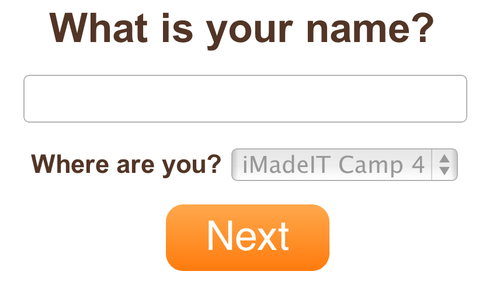 There is a problem with student-run startups: the vast majority of them flop. They rarely move past the project stage and become real businesses. As the former President of the NU Entrepreneurs Club and the founder of multiple “student run startups” like Quiree, I know this problem well, and I want to solve it.
There is a problem with student-run startups: the vast majority of them flop. They rarely move past the project stage and become real businesses. As the former President of the NU Entrepreneurs Club and the founder of multiple “student run startups” like Quiree, I know this problem well, and I want to solve it.
What causes the problem?
- NOT talent. Students are as talented, or more so, than their peers who have recently graduated. I’ll hire a student any day of the week and expect huge performance from them.
- NOT drive. Students these days are more ambitious than ever. They push and push, with the firm belief that they can do anything.
- NOT lack of resources. Here in Boston we have everything from university programs like IDEA to organizations like GreenhornConnect and Venture Cafe, complete with no-strings-attached $10,000 funding grants and access to the best mentors.
Instead, the problem is, overwhelmingly: student startups do not solve real problems.
A real problem must have three key attributes:
- Cost people money. (Remember, time equals money.)
- Cause people pain.
- Cause people to seek an alternative.
The majority of student startups I see—including several of the ones I did myself—focus on alleviating small annoyances and building widgets. A widget is a simple app that might seem novel, but doesn’t really solve anything or have a way of generating cash. These are easy to think of and usually cater to college students. Unfortunately, they are also not designed to grow into the real businesses that student founders think they have the potential to become.
Now, these “startup failures” can still be fantastic learning experiences and I wholeheartedly encourage any entrepreneurial student to pursue whatever project they are the most passionate about. In order to help guide you in the right direction on what startup project to attack, consider the following:
1. Think outside of the campus.
While life may seem tough at times, the truth is college students don’t have a lot of painful and costly problems—except perhaps college itself. If college students are your buyer, you better come up with a compelling product that they need. If they are your user, there must be another group (i.e. businesses, advertisers, etc.) that stand to make a lot of money by paying you for having students use the product.
2. Use the three problem points.
Those three characteristics of real problems should constitute your checklist. Whenever you are considering an idea, ask yourself: “Does my problem cost people money? Is it causing pain? Are people actually seeking solutions?”
3. Gather a ton of feedback.
Email or cold-call your way into meetings with successful post-graduate entrepreneurs in town and pitch them your idea, while also explicitly asking for genuine feedback. Ultimately, you may need to hear that your idea is not solving a real problem, so you can find a real one to focus on.
4. Build something quickly and see if people will use or pay for it.
A pretty good indicator of whether you are solving a real problem or not is if people are quickly willing to try it, use it or even buy it. If this is something that will take you months to develop and years to “monetize,” it might not make sense as a student startup project.
5. Ignore the consumer-web giants like Facebook, Twitter, Groupon, etc.
This one is tough because, as students, these are the companies we look up to thinking, "Wow, we want to be just like them.” The harsh reality is that while these are the companies we see and hear about all of the time, the statistical probability of a student startup turning into one of them is so incredibly low, that it might make more sense to learn through working on something more attainable, and leverage that experience to create the next Facebook. Northeastern student Jacob Mulligan’s first venture was painting houses. He made real money and learned invaluable lessons about how to handle cash and manage employees. This was a fantastic experience and should be looked to as a model.
If students consider these points, we’ll all still learn a ton and maybe even have some new businesses, ready to hire.
 My head was spinning. Sales seemed to be exploding in growth and service delivery was sprinting as it tried to fulfill all of the new customers that
My head was spinning. Sales seemed to be exploding in growth and service delivery was sprinting as it tried to fulfill all of the new customers that 

 “Slow and steady” wins the race doesn’t work for start-ups; you have to hustle. However, staying calm and cool through the crazy roller coaster ride of building a business is crucial.
“Slow and steady” wins the race doesn’t work for start-ups; you have to hustle. However, staying calm and cool through the crazy roller coaster ride of building a business is crucial.  For most start-up leaders, accounting is low on the priority list. After all, you have product, hiring and all of that fun stuff. But don’t forget: cash is king. You must understand how much of it you have so you can make informed decisions for product and hiring.
For most start-up leaders, accounting is low on the priority list. After all, you have product, hiring and all of that fun stuff. But don’t forget: cash is king. You must understand how much of it you have so you can make informed decisions for product and hiring.  As the former President of the
As the former President of the  On Sunday June 3rd,
On Sunday June 3rd,  If there is a gold rush equivalent in the entrepreneurship world, it is without a doubt a hunt for developers. One surprising place where more high quality developers are starting to appear is in
If there is a gold rush equivalent in the entrepreneurship world, it is without a doubt a hunt for developers. One surprising place where more high quality developers are starting to appear is in  This time it wasn’t curiosity that did it. Complexity is a challenge, especially in business and product development. Take
This time it wasn’t curiosity that did it. Complexity is a challenge, especially in business and product development. Take  Back when I had the honor of working with
Back when I had the honor of working with